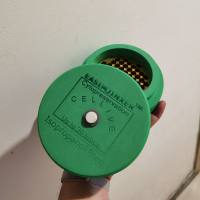PCR Site-Directed Mutagenesis Using Pyrococcus sp GB-D Polymerase Coupled to a Rapid Screening Procedure: Application to a -Glucanase Gene
互联网
互联网
相关产品推荐

eglS/eglS蛋白/Carboxymethyl-cellulase;CMCase;Cellulase;Endo-1,4-beta-glucanase蛋白/Recombinant Bacillus subtilis Endoglucanase (eglS)重组蛋白
¥69

SARS-CoV-2 (2019-nCoV) Spike Gene ORF cDNA clone expression plasmid (Codon Optimized)
¥4690

人II型糖尿病(晚发性、胰岛素抗性)定量PCR芯片试剂盒
$240

EASIMJINXER CryoKing 30-Well Cryoboxes, -1℃(-33.8℉) Cell Freezing Container, EVA Freezer Boxes, Laboratory Procedure Cooling Box for 1.2ml or 2.0ml Vials, 1 Pcs Freezing Containers
¥598

重组人PSMA/FOLH1蛋白 (Site-Specific AF 647 Conjugation, His Tag)
¥3480
相关问答

